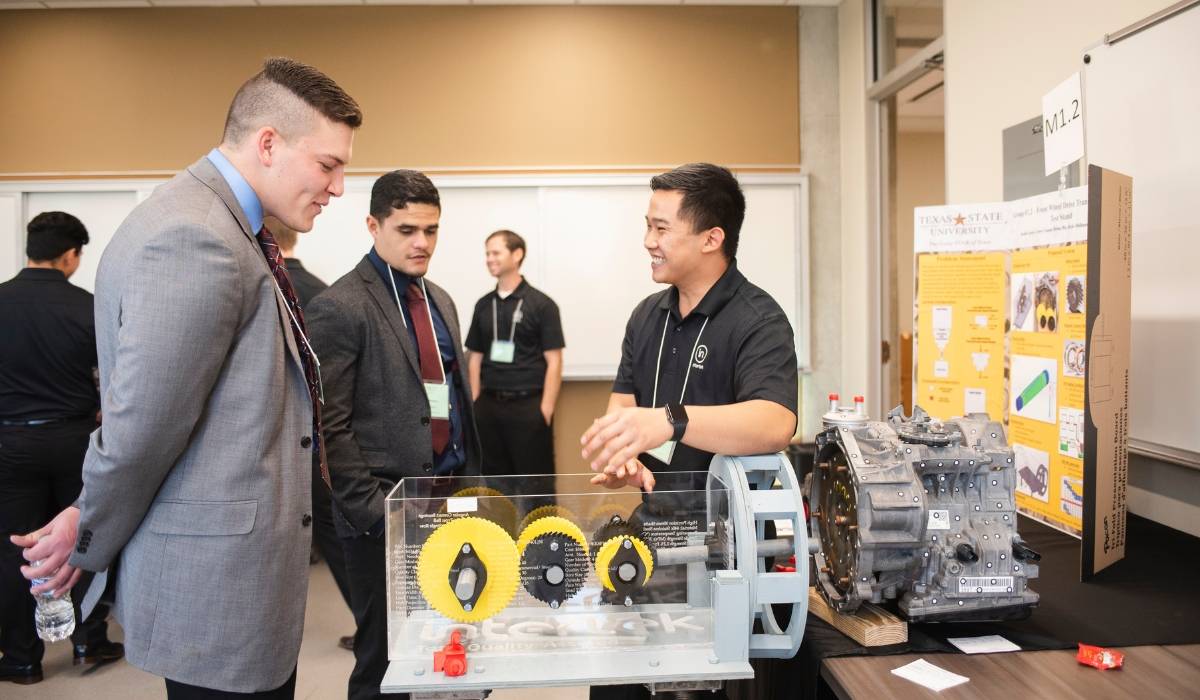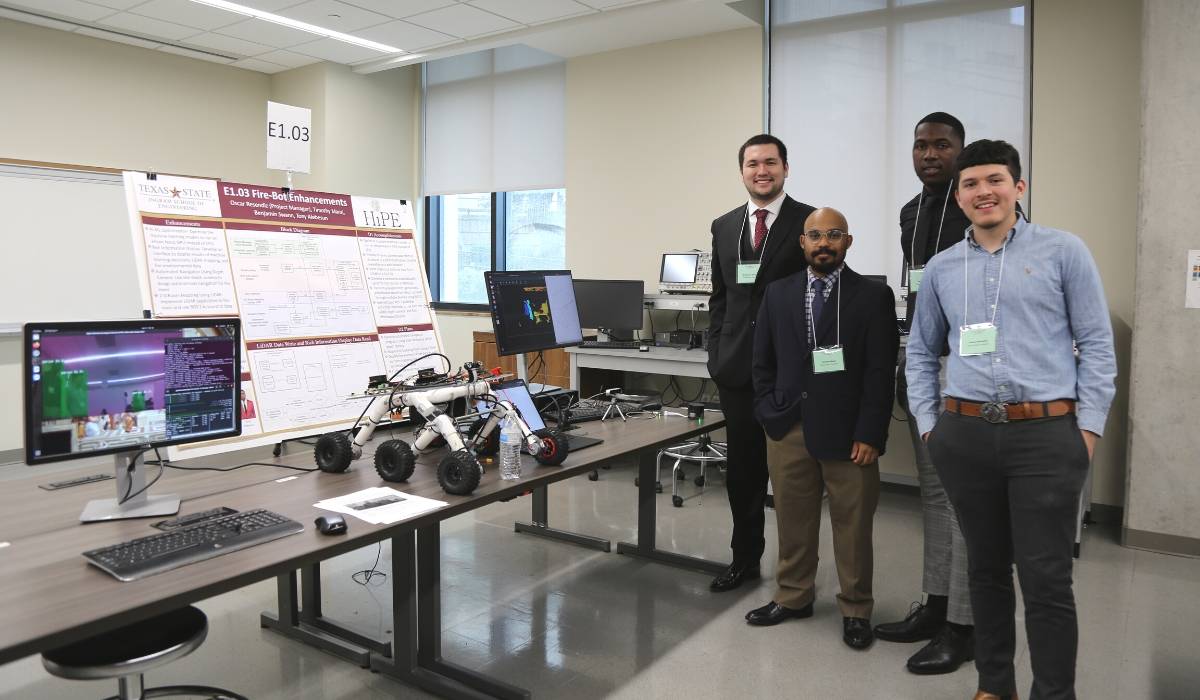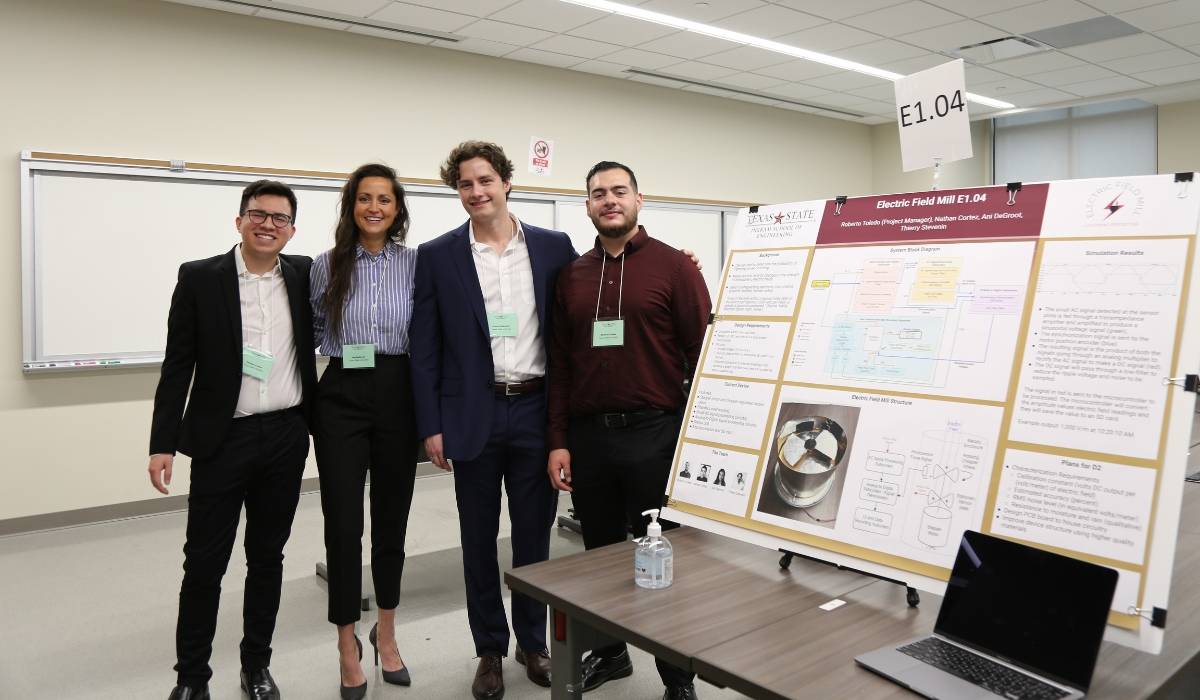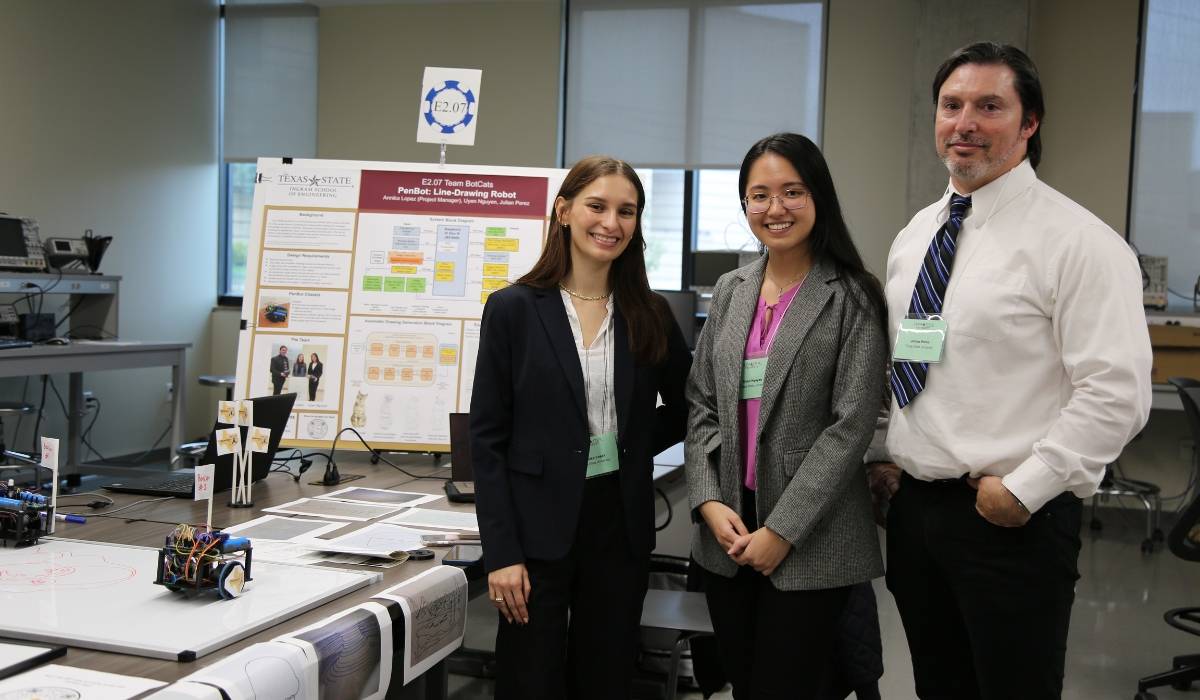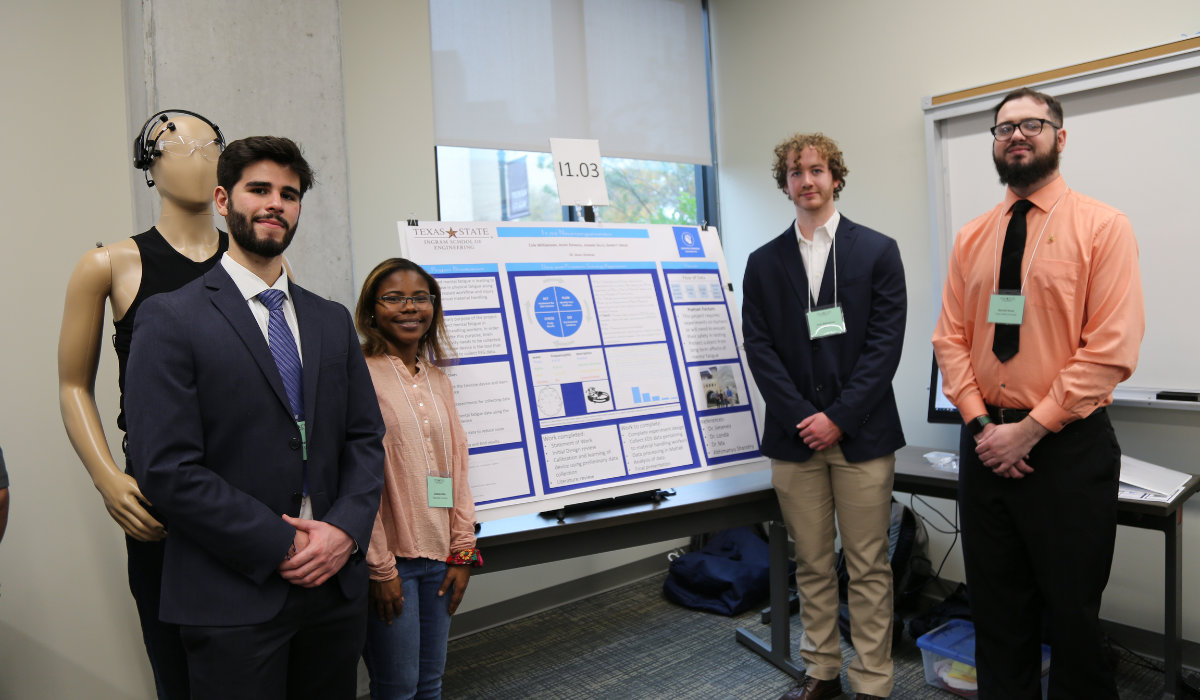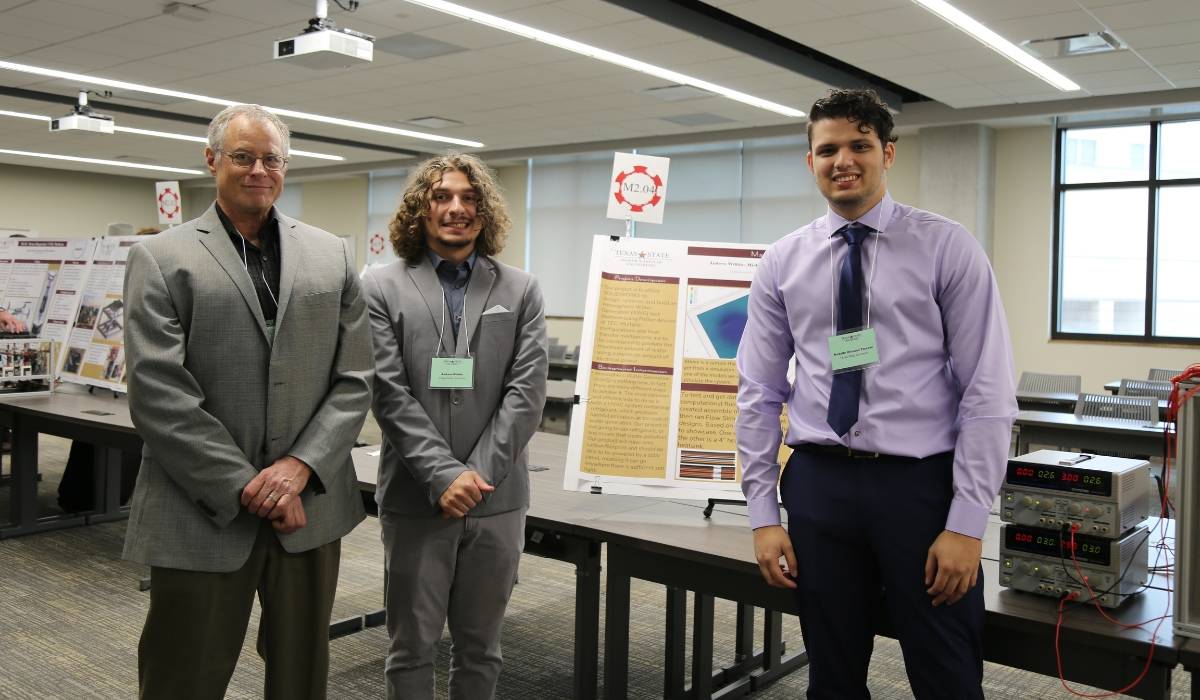On December 2, Texas State University students from the Ingram School of Engineering participated in Senior Design Day, a biannual event designed to showcase capstone projects and student accomplishments. Each semester, students are given the challenge to solve real-world problems using their engineering skills. The students’ projects, backed by industry partners and prospective companies, were judged based on technical merit and the professionalism of the display booth and the team.
Over thirty projects were on display at this semester's event. Read about a few of those projects and their teams below.
